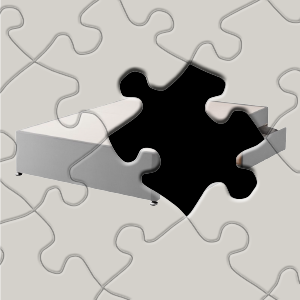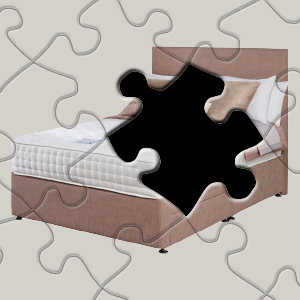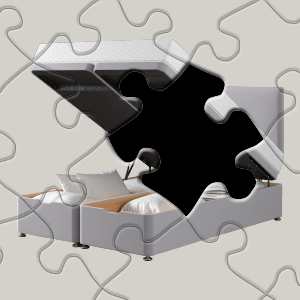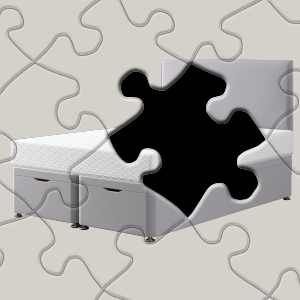CARE INSTRUCTIONS
At Barkers we work very hard to give our customers the best advice we can. We know that if you follow our care instructions your beautiful furniture will last longer and perform better during it's life span. Please scroll down to the appropriate how to care for your furniture instructions:
CARE INSTRUCTIONS
At Barkers we work very hard to give our customers the best advice we can. We know that if you follow our care instructions your beautiful furniture will last longer and perform better during it's life span. Please scroll down to the appropriate how to care for your furniture instructions:
GENERAL UPHOLSTERY CARE
The Frame
All great pieces of upholstery come with an amazing frame with the base. A sturdy frame means a longer lasting sofa. The best frames to buy are hardwood frames, they are expensive but they are very durable and long lasting. Plywood is next best; it's affordable, strong and durable. Don't even go there if it is a soft wood, metal or plastic frame, they are cheap, warp easily and are not strong at all. How the frame is made is also important, the best is connected joints, where wooden dowel, corner dock, metal screws and metal brackets are used. Avoid any frames that just use glue, staples and nails, these too are weak.
The Springs
Good springs make your sofa comfy and last longer. The most expensive but by far the best are hand-tied springs. They are comfortable and long lasting. Serpentine springs are the most common and most affordable for value. They are supportive but they sag overtime. If it has no springs and just has a web mesh it will be uncomfortable and flimsy. Check for squeaks and creaks as they are a sign of incorrectly placed springs. See what metals they use also, the heavier the better.
Fillings
Filling makes a big difference in your sofa, choose wisely. There are two expensive but good quality options. High resilient foam is comfortable and long lasting, goose/duck feathers are sumptuous and high maintenance. For value without breaking the bank, Polyurethane foam is easy to care for and there is a lot of choice in firmness. A down-poly blend is another cheaper option with a luxurious feel but it will flatten quicker. Polyester fibre is cheap and flattens quickly.
On delivery
Before your furniture is delivered make sure you clear enough space for our friendly delivery team to manoevre your furniture safely into the room.
If you have ordered a reclining sofa or chair make sure there is enough room for the motion of reclining.
Once the furniture has been delivered and all packaging has been removed, take a few minutes to inspect it and make sure you are completely happy with it before the delivery team leaves.
If you have wooden floors make sure you use protective felt on the feet of the furniture to prevent scratching.
Leather furniture may appear flat and creased when removed from packaging. Smooth our with palms of your hands and once air circulates the sofa will fall into it's correct shape.'
GENERAL UPHOLSTERY CARE
The Frame
All great pieces of upholstery come with an amazing frame with the base. A sturdy frame means a longer lasting sofa. The best frames to buy are hardwood frames, they are expensive but they are very durable and long lasting. Plywood is next best; it's affordable, strong and durable. Don't even go there if it is a soft wood, metal or plastic frame, they are cheap, warp easily and are not strong at all. How the frame is made is also important, the best is connected joints, where wooden dowel, corner dock, metal screws and metal brackets are used. Avoid any frames that just use glue, staples and nails, these too are weak.
The Springs
Good springs make your sofa comfy and last longer. The most expensive but by far the best are hand-tied springs. They are comfortable and long lasting. Serpentine springs are the most common and most affordable for value. They are supportive but they sag overtime. If it has no springs and just has a web mesh it will be uncomfortable and flimsy. Check for squeaks and creaks as they are a sign of incorrectly placed springs. See what metals they use also, the heavier the better.
Fillings
Filling makes a big difference in your sofa, choose wisely. There are two expensive but good quality options. High resilient foam is comfortable and long lasting, goose/duck feathers are sumptuous and high maintenance. For value without breaking the bank, Polyurethane foam is easy to care for and there is a lot of choice in firmness. A down-poly blend is another cheaper option with a luxurious feel but it will flatten quicker. Polyester fibre is cheap and flattens quickly.
On delivery
Before your furniture is delivered make sure you clear enough space for our friendly delivery team to manoevre your furniture safely into the room.
If you have ordered a reclining sofa or chair make sure there is enough room for the motion of reclining.
Once the furniture has been delivered and all packaging has been removed, take a few minutes to inspect it and make sure you are completely happy with it before the delivery team leaves.
If you have wooden floors make sure you use protective felt on the feet of the furniture to prevent scratching.
Leather furniture may appear flat and creased when removed from packaging. Smooth our with palms of your hands and once air circulates the sofa will fall into it's correct shape.'


LEATHER UPHOLSTERY CARE
Grain leathers
Grain leathers may be finished or unfinished leathers.
Is my grain leather unfinished?
If you put a drop of water on a hidden area and the water is absorbed rapidly, with a darkening of the leather, then it is unfinished.
Is my grain leather finished?
If you put a drop of water on a hidden area and the water remains on the surface it is a finished leather or water-repellent treated.
How do I care for my finished grain leather?
If you have finished grain leather lightly wipe the surface with a damp cloth and then gently wipe with a dry cloth. If the soiling is stubborn, a dilute solution of alkaline soap (i.e. Lux Flakes or Dove soap) can be used. Simply add about 1% soap solution. After wiping with a damp cloth, polish with a soft dry cloth. This is applicable to all finished leathers where the finish is being cleaned and not the substrate (actual leather surface).
ALWAYS ensure you keep 2 NEW cloths separate in a plastic bag (free from contamination with bleach & other household cleaners).
How do I clean bonded-leather & faux-leather?
Lightly wipe the surface with a damp cloth and then gently wipe with a dry cloth. If the soiling is stubborn, a dilute solution of alkaline soap (i.e. Lux Flakes or Dove soap) can be used. Simply add about 1% soap solution. After wiping with a damp cloth, polish with a soft dry cloth.
ALWAYS ensure you keep 2 NEW cloths separate in a plastic bag (free from contamination with bleach & other household cleaners).
How do I care for my waxed leather?
Don't use anything at all.
Make it last
- Never place furniture in front of direct heat or near air conditioning.
- Light affects the colour of most products, to avoid furniture fading place away from direct sunlight.
- Open and close any recliner mechanisms slowly and with care, never force them as this could damage the mechanism
- Do not leave newspapers lying on the suite as the ink may transfer
- Be careful when wearing dark coloured denim jeans or non-colourfast fabrics as the colour can easily transfer to lighter coloured upholstery
LEATHER UPHOLSTERY CARE
Grain leathers
Grain leathers may be finished or unfinished leathers.
Is my grain leather unfinished?
If you put a drop of water on a hidden area and the water is absorbed rapidly, with a darkening of the leather, then it is unfinished.
Is my grain leather finished?
If you put a drop of water on a hidden area and the water remains on the surface it is a finished leather or water-repellent treated.
How do I care for my finished grain leather?
If you have finished grain leather lightly wipe the surface with a damp cloth and then gently wipe with a dry cloth. If the soiling is stubborn, a dilute solution of alkaline soap (i.e. Lux Flakes or Dove soap) can be used. Simply add about 1% soap solution. After wiping with a damp cloth, polish with a soft dry cloth. This is applicable to all finished leathers where the finish is being cleaned and not the substrate (actual leather surface).
ALWAYS ensure you keep 2 NEW cloths separate in a plastic bag (free from contamination with bleach & other household cleaners).
How do I clean bonded-leather & faux-leather?
Lightly wipe the surface with a damp cloth and then gently wipe with a dry cloth. If the soiling is stubborn, a dilute solution of alkaline soap (i.e. Lux Flakes or Dove soap) can be used. Simply add about 1% soap solution. After wiping with a damp cloth, polish with a soft dry cloth.
ALWAYS ensure you keep 2 NEW cloths separate in a plastic bag (free from contamination with bleach & other household cleaners).
How do I care for my waxed leather?
Don't use anything at all.
Make it last
- Never place furniture in front of direct heat or near air conditioning.
- Light affects the colour of most products, to avoid furniture fading place away from direct sunlight.
- Open and close any recliner mechanisms slowly and with care, never force them as this could damage the mechanism
- Do not leave newspapers lying on the suite as the ink may transfer
- Be careful when wearing dark coloured denim jeans or non-colourfast fabrics as the colour can easily transfer to lighter coloured upholstery


MATTRESS CARE
Doing the following will increase the life of your mattress
Turn your mattress four times a year to distribute the wear evenly, more frequently in the first few weeks. A mattress should be turned side to side and also top to toe. The easiest way to do this is working with one person on each long side of the bed, grab onto the handles and turn the mattress perpendicular to the box spring. Then slide the mattress partially off one side, bringing the end that was at the foot of the bed up, and let the other end fall to the floor so the mattress is standing on one end. Then simply let if fall back on to the bed and turn it back into place, with the end that was the foot now at the head.
Vacuuming your mattress and base every three months with the upholstery attachment each time you do the turning helps extend the life of your mattress. As does striping your bed whenever you go on holiday, in order to air it out.
Following this list of do not's will help protect your mattress:
- Don't sit on the edge of a mattress.
- Don't allow your mattress to get wet.
- Don't use dry-cleaning fluid of any type to clean your mattress.
- Don't place a board between your mattress and your box spring.
- Don't let children jump on the bed, its not a trampoline.
Another part of keeping your mattress lasting longer is to maintain it's cleanliness. We have a article on the blog explaining our top tips to fight asthma by keeping your bedroom clean and fresh, although of course this is good practice for all households not just those with asthma sufferers. Read our Bedroom Cleaning Tips to Fight Asthma.
MATTRESS CARE
Doing the following will increase the life of your mattress
Turn your mattress four times a year to distribute the wear evenly, more frequently in the first few weeks. A mattress should be turned side to side and also top to toe. The easiest way to do this is working with one person on each long side of the bed, grab onto the handles and turn the mattress perpendicular to the box spring. Then slide the mattress partially off one side, bringing the end that was at the foot of the bed up, and let the other end fall to the floor so the mattress is standing on one end. Then simply let if fall back on to the bed and turn it back into place, with the end that was the foot now at the head.
Vacuuming your mattress and base every three months with the upholstery attachment each time you do the turning helps extend the life of your mattress. As does striping your bed whenever you go on holiday, in order to air it out.
Following this list of do not's will help protect your mattress:
- Don't sit on the edge of a mattress.
- Don't allow your mattress to get wet.
- Don't use dry-cleaning fluid of any type to clean your mattress.
- Don't place a board between your mattress and your box spring.
- Don't let children jump on the bed, its not a trampoline.
Another part of keeping your mattress lasting longer is to maintain it's cleanliness. We have a article on the blog explaining our top tips to fight asthma by keeping your bedroom clean and fresh, although of course this is good practice for all households not just those with asthma sufferers. Read our Bedroom Cleaning Tips to Fight Asthma.




























